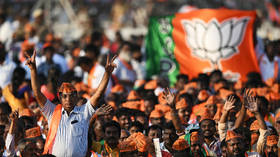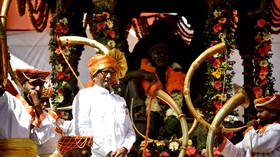Like My Reel, Vote My Party: World’s biggest election is being dominated by local Instagram stars
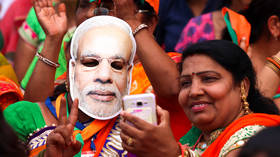
Neil Shakya, 25, is an Instagram influencer from India’s most populous state, Uttar Pradesh. An aspiring police officer from a tier-III city, his Instareels proudly boast his Hindu identity to his 353,000 followers throughout the state – and do so due to a lucrative deal with a non-party person who wishes the Bharatiya Janata Party (BJP) to return to power in the ongoing national election.
What is new in the messaging by Neil and others like him is that the BJP earlier relied on effective messaging through Facebook in 2014 and on WhatsApp in 2019. In 2024, the party –and its opponents – are relying on decentralized messaging, through ‘micro-influencers’ from small towns using Instagram and YouTube – both highly popular with youth and first-time voters.
The independent polling body the Election Commission of India (ECI) says there are 18.2 million first-time voters on its electoral rolls. Voters aged between 18 and 29 number over 197 million, including 20 million new voters in the age group.
India is the biggest market for Instagram, WhatsApp and Facebook, all owned by Meta, with 229 million, 535 million and 315 million users respectively. Google-owned YouTube has 462 million users in India. Statista says India’s influencer market will grow by over $300 million by 2025.
And, according to SS, a social-media manager demanding anonymity for this story, whereas WhatsApp is associated with negative messaging, Instareels are positive by their very nature, especially those by young women.
A way to make decent money
For instance, Neil Shakya has a separate Instagram page dedicated to his hometown, with 90,000 followers, that has also been monetized for political campaigns.
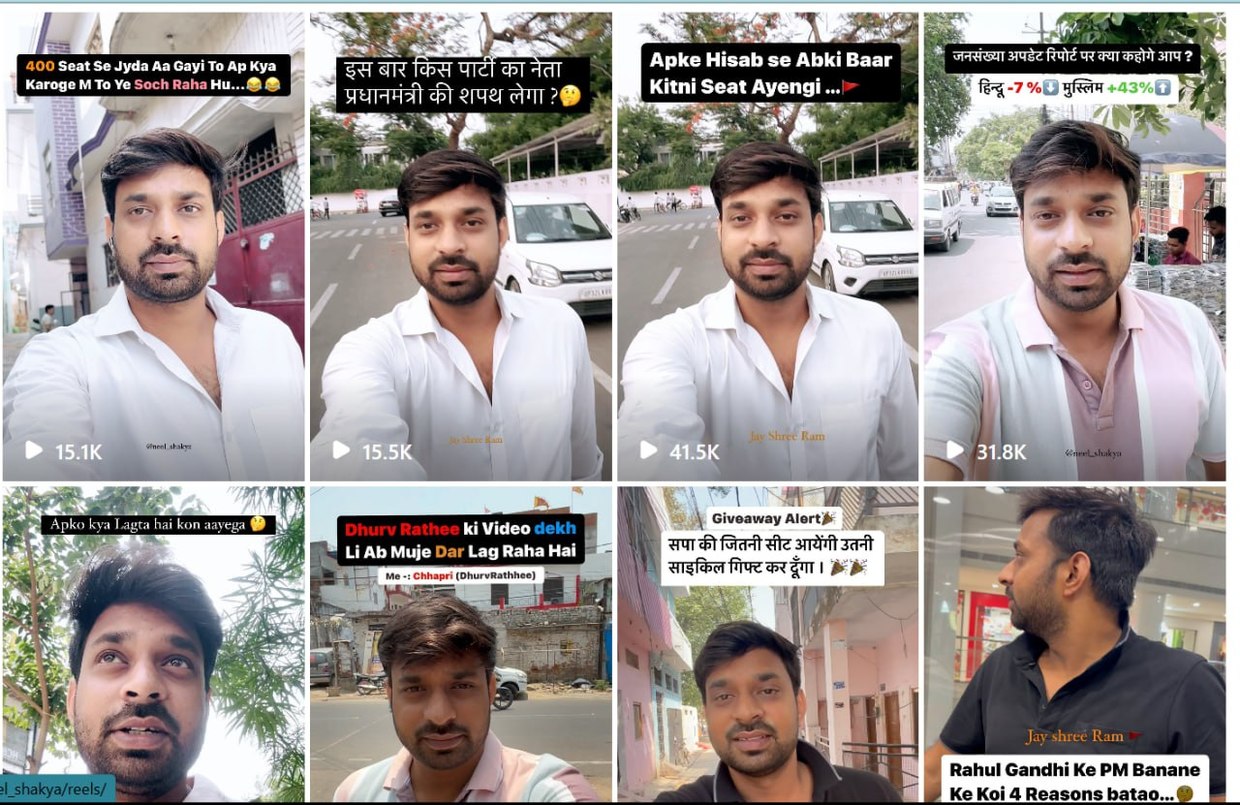
“I heard about this business model from other influencers around the country,” Shakya told RT. “I told the middle-man my rates and they agreed. These are random people without a designation in political parties, and sometimes they are from little-known social media agencies. They pay in cash when the work is done.”
“It is a sweet deal for young people like me who are still preparing for a job. Although it is full time, we make decent money.”
Manish Kumar runs a social-media agency in Bihar, India’s poorest state. He claims to manage the social-media accounts of over 15 politicians contesting the ongoing election to the national parliament’s lower house, the Lok Sabha.
Special demand
“There is huge demand for social media influencers, especially girls under 25 with a large fan base, especially on Instagram. Leaders now know where India’s youth is spending most of its time. The demand for making ‘reels’ that are politically aligned has gone up, and influencers charge according to the number of their followers,” Manish tells RT.
“Another important aspect of this form of political campaign is that work comes from a party supporter and not from the party so the funds spent are not counted in the budget of either the candidate or their party, and does not violate the Election Commission’s spending limits,” he says. “These campaigns continue even after the [commission’s] campaigning deadline.”
Apoorva Tripathi, 25, has an enviable 67,000 followers on Instagram. From Lucknow, the capital of Uttar Pradesh, her online influence began by promoting Punjabi music. Little did she know that her digital prowess would catch the attention of the political machinery.
“In February a major opposition party proposed a collaboration to promote their agenda on my handle,” Apoorva recalls. “The offer was financially enticing but I had to decline because neither my family nor I align with that party’s ideologies.”
She will promote a political campaign if she gets the right deal. “I am young and also studying, which is why I am not stressing hard to get a deal,” she says. “Also, I have a lot of work at the moment.”

A survey by Lokniti-CSDS (Centre for Studies of Developing Societies), a think tank, says 27% of the 10,000 voters (across 19 of 28 states) cited unemployment as their primary concern. Though India is the world’s fastest-growing major economy, 62% surveyed said finding jobs had become more difficult in the last five years.
From pamphlets to digital
The landscape of political advertising has undergone a seismic shift, according to Santosh Sharma, 34, an advertising executive and political liaison in Lucknow. Gone are the days when parties heavily relied on traditional media like pamphlets, hoardings, and print advertisements. The real battleground is digital – specifically Instagram and its burgeoning influencer ecosystem.
“Every political party today wants to engage micro-influencers in each district,” Sharma explains. “The Indian audience is spending significant time-consuming Instagram ‘Reels’ and other short-form content.”
These micro-influencers, with their localized appeal and dedicated following, have proven instrumental in creating a tangible impact on potential voters.
Sharma cites the example of Navratan Yadav, a 12-year-old influencer who, despite his tender age and lack of political awareness is most sought-after by the state’s Samajwadi Party. ”Navratan is paid well because he has a substantial following on Instagram, is well-liked, and his content goes viral,” Sharma says.EditDelete
This transition from print to radio and television and now to micro-influencers signifies the future of political marketing. “Micro-influencer marketing is the future,” Sharma asserts confidently.
“Micro-influencers offer a cost-effective alternative to traditional advertising media, allowing parties to maximize their outreach while optimizing their marketing budget,” Sharma says. “With relatable personalities, personal connection and hyper-localized appeal, these influencers can effectively disseminate party messaging and sway public opinion in a way that resonates with target voters in their respective communities.”
‘Instagram now has 60% of the market’
SS (real name hidden on request) is a social-media vendor mostly into mass WhatsApp messaging and paid Twitter/X trends. “WhatsApp is basically used to spread misinformation and we as a vendor have not witnessed much demand for mass messaging through WhatsApp,” he tells RT. “This time people are approaching us for Instagram influencers because Instareels have a larger audience.”
There has been a decline in demand. “Over 60% of the market is now captured by Instagram and a tiny portion left with X,” SS says. “X’s frequent algorithm changes has made it difficult, and this is a reason political parties want to go with micro-influencers on Instagram.”
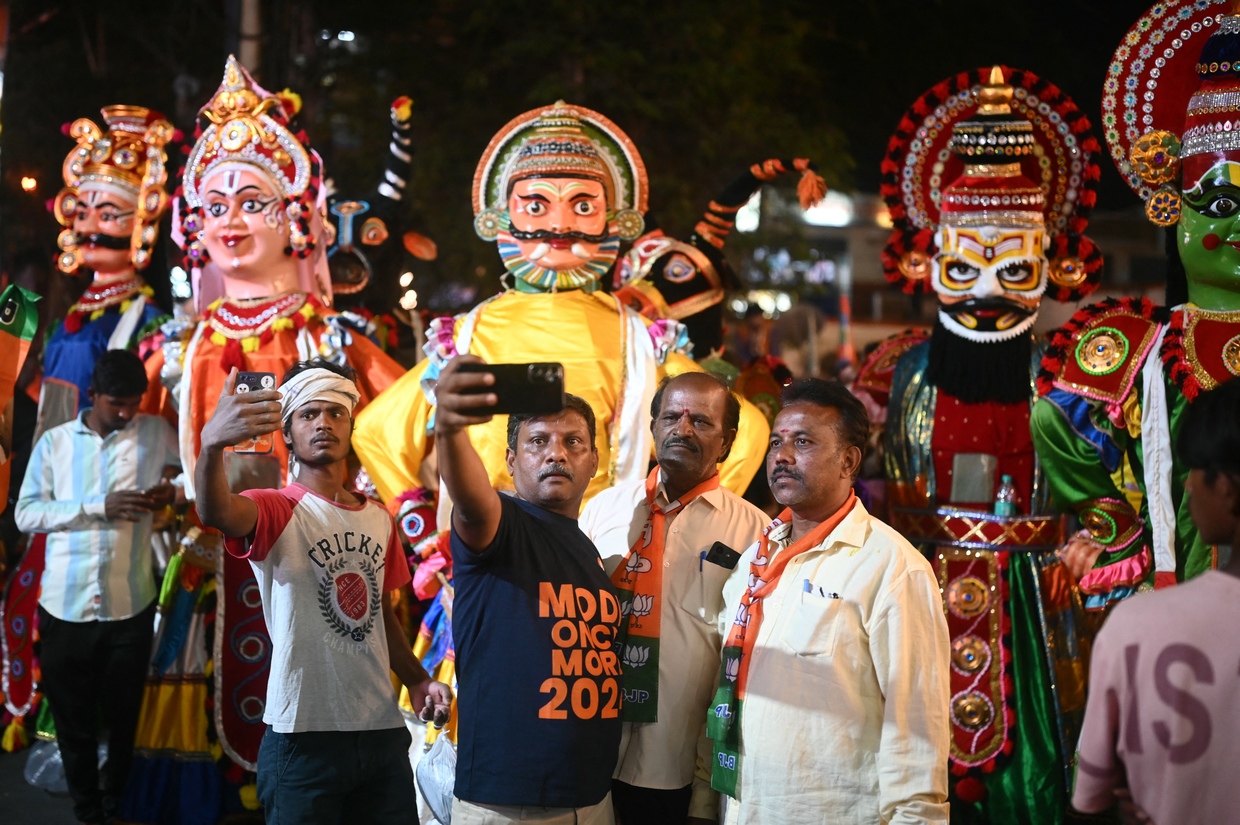
SS adds that micro-influencers have hiked their rates as demand grows. They now charge at least 30% compared to their per-Instareel rates in December.
“Earlier, politicians or parties would be in touch with journalists or media organizations, print, electronic and digital, to get their voices across to common people,” says Bharat Nayak, independent fact checker and media literacy trainer. “However, with the increasing influence and reach of influencers, politicians are comfortable giving interviews to them, especially in India. Influencers ask comfortable and public-relations related questions, typically avoiding interrogative or challenging ones, helping politicians create a positive image.”
Social media need not say if content is ‘paid’
There is another benefit. “When politicians or parties promote content in print or digital media, it’s typically disclosed if it’s paid content,” Nayak says. “However, influencers often don’t reveal if their content is paid for, leading to potential bias.”
For example, influencers are invited to government functions and videos from these events are promoted on social media without mentioning the relationship. “This trend has become common in India, especially during the approach of elections, with political parties using influencers to highlight their work or propagate their messages at a relatively low cost,” says Nayak.
Expressing concern, Dr Tanu Dang, associate professor at Delhi’s Guru Gobind Singh Indraprastha University, says there should be a mechanism to check the political content being generated in ‘Stories and Reels’ on social media.
“Roping in social media influencers for effective marketing has become the norm for most brands,” she says. “Now even political parties have started leveraging the online presence and reach of influencers by engaging them in campaigns. Influencers are generating substantial income by endorsing political messages and sharing political content. However, the absence of mechanisms to check the authenticity of the information remains a cause of concern as they have the virtual power to influence public opinion.”
The Election Commission of India lacks special strategies or mechanisms to keep a check on social media. They can only check possible violations of the Model Code of Conduct through complaints received through tagging by users.
